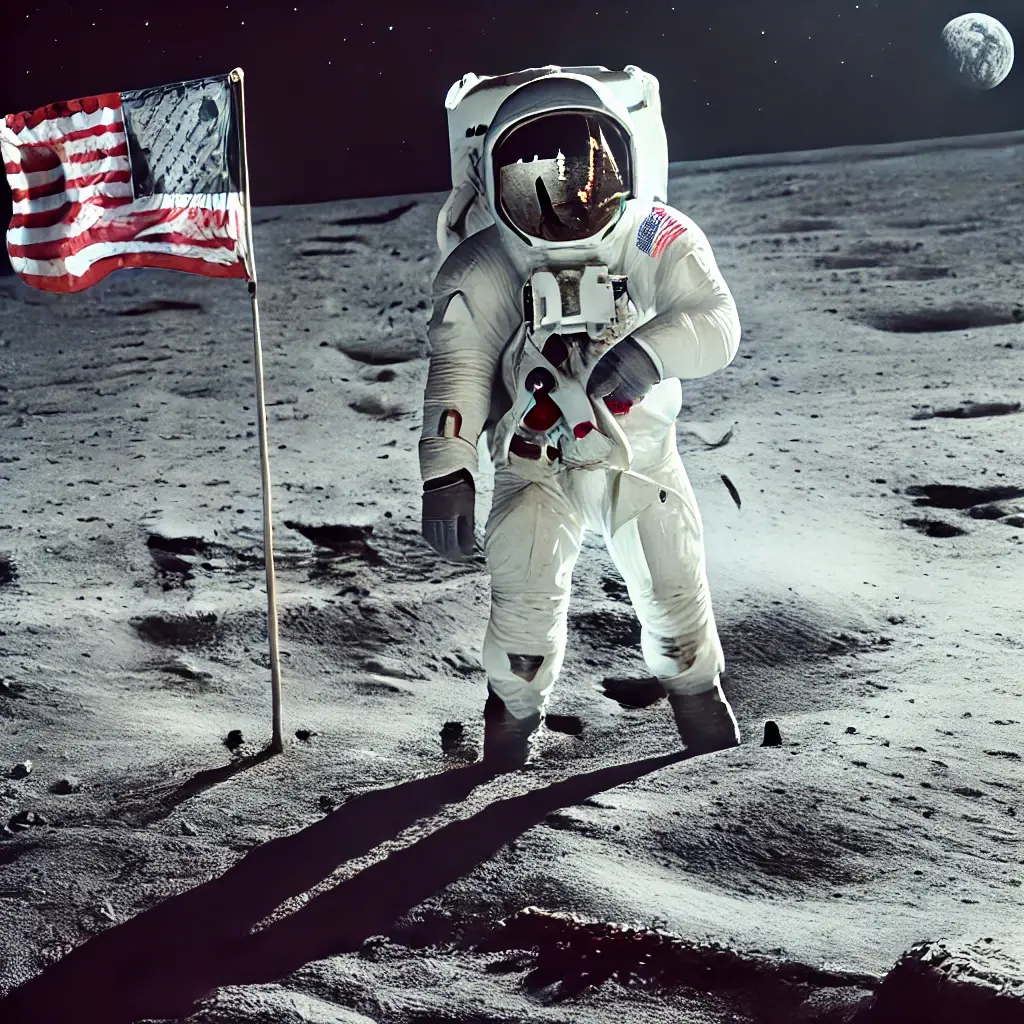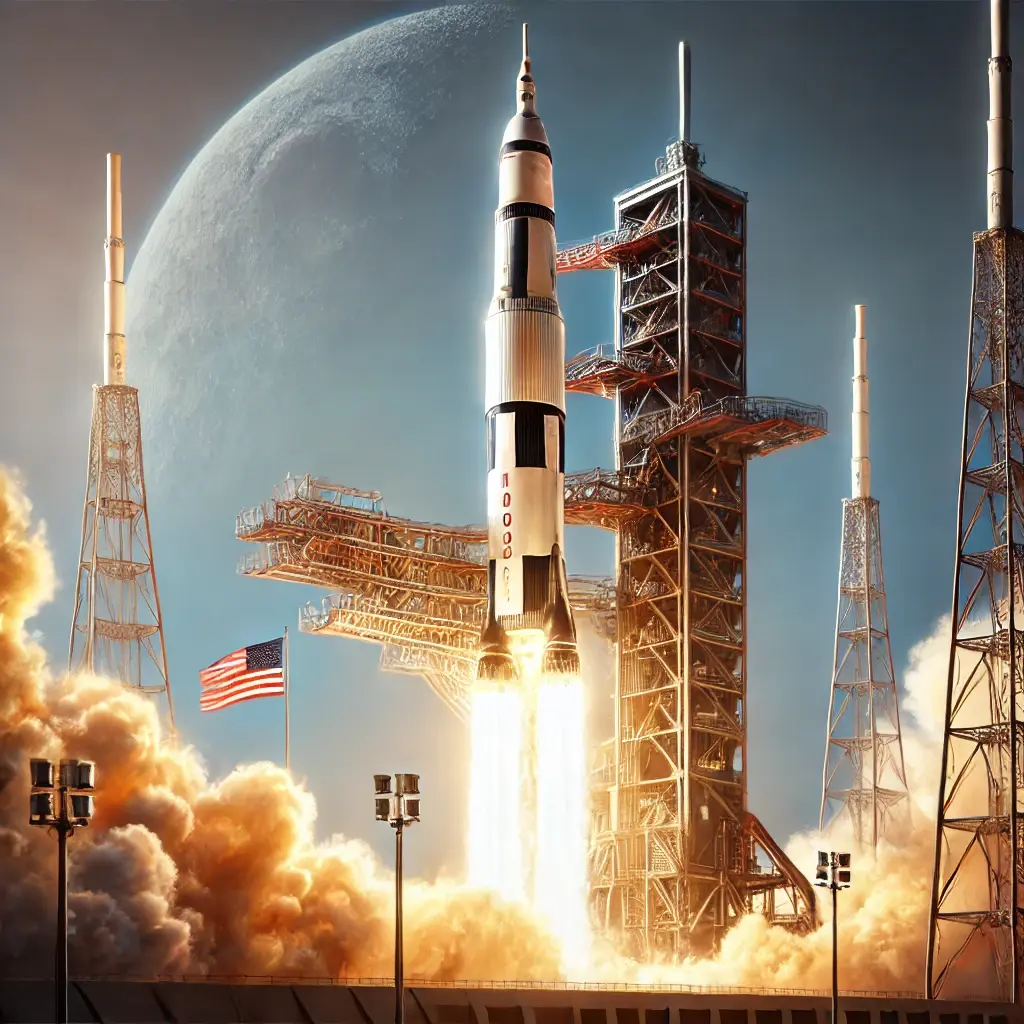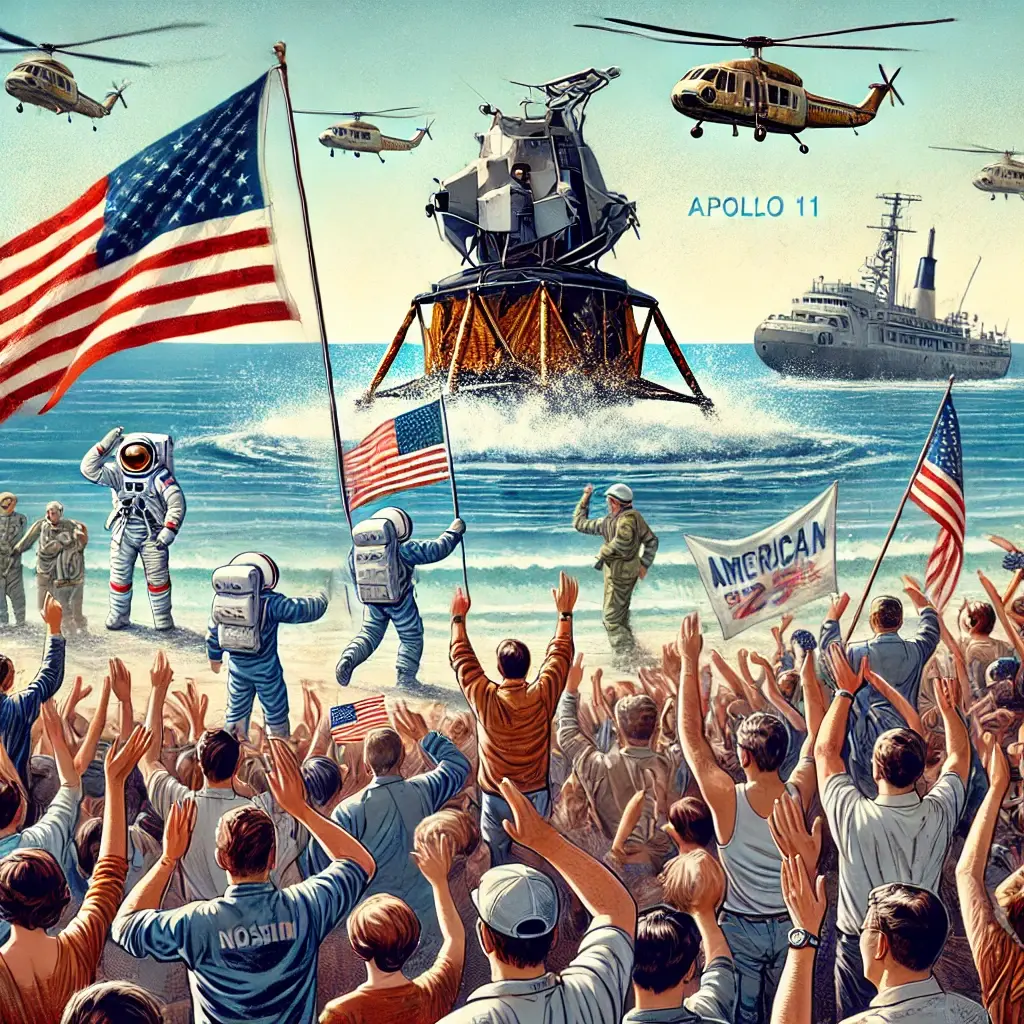On July 20, 1969, Neil Armstrong became the first human to set foot on the moon, famously declaring, “That’s one small step for [a] man, one giant leap for mankind.” This moment occurred during the Apollo 11 mission, an event watched by millions around the globe and marking a watershed in the space race between the United States and the Soviet Union. Armstrong, followed by Buzz Aldrin, spent over two hours walking on the moon, collecting samples, and conducting experiments that would expand our understanding of lunar surfaces and set the stage for future space exploration.

The Apollo 11 mission was the culmination of years of intense research, development, and testing by NASA. The mission was part of the Apollo program, which was initiated to fulfill President John F. Kennedy’s 1961 goal of landing a man on the moon and returning him safely to Earth. The program was not only a scientific endeavor but also a strategic move in the Cold War, showcasing American technological prowess.
The journey to the moon began with the launch of the Saturn V rocket on July 16, 1969, from Kennedy Space Center in Florida. The Saturn V, still the most powerful rocket ever built, stood 363 feet tall and generated 7.6 million pounds of thrust. It carried the Apollo spacecraft, which consisted of three parts: the Command Module (Columbia), the Service Module, and the Lunar Module (Eagle).
After reaching lunar orbit, Armstrong and Aldrin transferred to the Lunar Module, Eagle, while Michael Collins remained in orbit aboard Columbia. On July 20, Eagle descended to the moon’s surface, landing in the Sea of Tranquility. The landing was fraught with challenges, including a boulder-strewn landscape and fuel shortages, but Armstrong’s piloting skills ensured a safe touchdown.
The moment Armstrong stepped onto the lunar surface was broadcast live to an estimated 600 million people around the world, thanks to advancements in satellite technology. His first words from the moon have since become iconic, symbolizing the collective achievement of humanity. Aldrin soon followed, and the two astronauts spent a total of 21 hours on the moon, with over two hours outside the Lunar Module.
During their moonwalk, Armstrong and Aldrin deployed scientific instruments, including a seismometer to measure moonquakes and a retroreflector array for laser ranging experiments. They also collected 47.5 pounds of lunar rock and soil samples, which have provided invaluable insights into the moon’s composition and geological history.
The lunar samples revealed that the moon’s surface is composed of basalt and anorthosite, and they also contained traces of volcanic activity. These findings have helped scientists understand the moon’s formation and its relationship to Earth. The samples continue to be studied, offering new insights as analytical techniques advance.

Apollo 11’s success was not just a technological triumph but also a unifying moment for humanity. Despite the geopolitical tensions of the Cold War, the mission was celebrated globally as a testament to what humans can achieve when they work together toward a common goal. The astronauts were hailed as heroes and embarked on a world tour to share their experiences.
The legacy of Apollo 11 extends beyond the immediate scientific and cultural impact. The mission spurred advances in technology, engineering, and computer science, many of which have had lasting benefits for various industries. The development of miniaturized electronics, for example, was crucial for the spacecraft’s navigation systems and has since revolutionized consumer electronics.
Apollo 11 also had a profound influence on the space program. It demonstrated that humans could travel to and from another celestial body, paving the way for subsequent lunar missions and the eventual exploration of Mars and beyond. NASA’s Artemis program, aiming to return humans to the moon in the 2020s, builds directly on the legacy of Apollo.
The mission’s historical significance is commemorated in numerous ways. The Apollo 11 landing site, Tranquility Base, is a designated lunar heritage site, and artifacts from the mission are displayed in museums around the world. Armstrong’s spacesuit, for example, is preserved at the Smithsonian National Air and Space Museum, attracting millions of visitors each year.
Neil Armstrong, who passed away in 2012, is remembered not only for his achievement but also for his humility and dedication to advancing human knowledge. His legacy is honored through various memorials, educational programs, and even geographic features on the moon named in his honor.
Buzz Aldrin, who followed Armstrong onto the lunar surface, continues to be an advocate for space exploration. His work includes promoting Mars colonization and inspiring future generations of scientists, engineers, and explorers. Michael Collins, often called the “forgotten astronaut,” played a crucial role in the mission’s success by piloting the Command Module and ensuring a safe return to Earth.
The Apollo 11 mission’s success relied on the contributions of thousands of engineers, scientists, and support staff. From the initial conception to the final splashdown in the Pacific Ocean on July 24, 1969, the mission showcased the power of teamwork and innovation. The collaborative spirit that drove Apollo 11 continues to inspire space exploration efforts today.
The mission also prompted reflections on our place in the universe. Seeing Earth from the moon—a small, fragile blue sphere in the vastness of space—has had a lasting impact on how we view our planet and our responsibility to protect it. This perspective has influenced environmental movements and efforts to address global challenges such as climate change.

Apollo 11’s legacy is also reflected in popular culture. The mission has been the subject of numerous books, documentaries, and films, including the acclaimed movie “First Man,” which chronicles Neil Armstrong’s life and the challenges of the Apollo program. These works help keep the story of Apollo 11 alive for new generations.
As we look to the future, the spirit of Apollo 11 continues to drive human exploration. NASA, along with international and commercial partners, is planning new missions to the moon, Mars, and beyond. The lessons learned from Apollo 11—about perseverance, ingenuity, and the human spirit—remain relevant as we push the boundaries of what is possible in space exploration.
